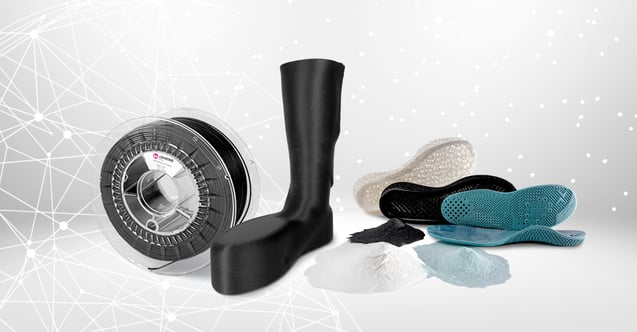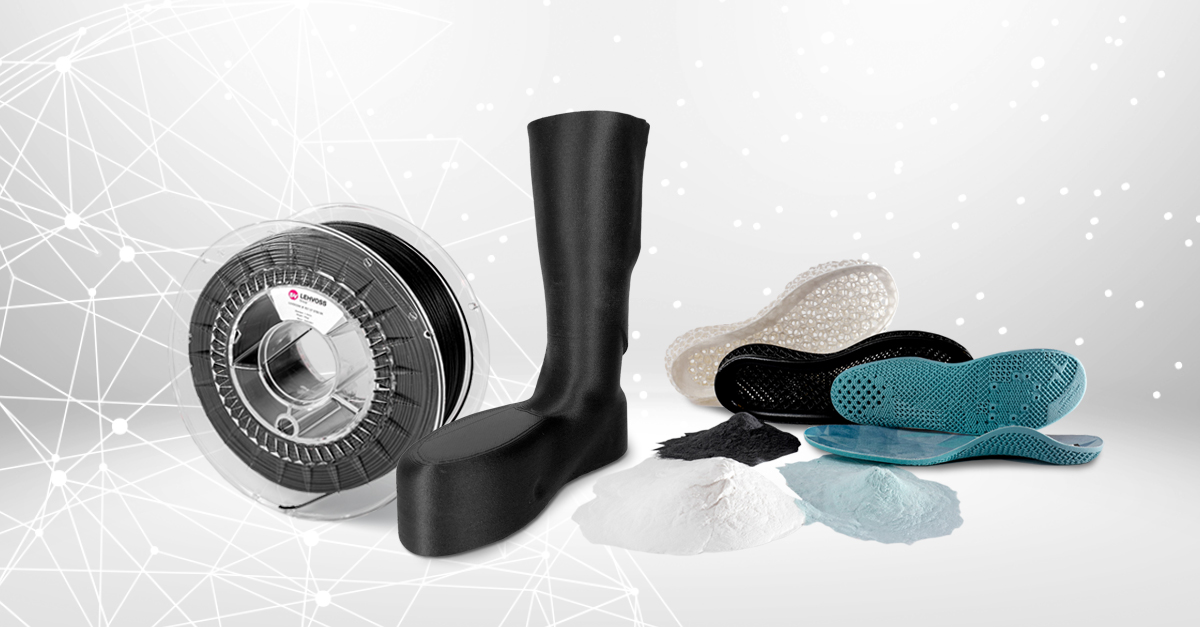Knockout already in round one? Clear the ring for the battle of the 3D printing processes!

Welcome to a fight of the extra class, where it is about nothing less than the title "World Champion Industrial 3D Printing" ". In one corner: Extrusion printing (FFF – Fused Filament Fabrication and FGF – Fused Granulate Fabrication) - represented by "Doc Medeiros"; the Brazilian Thiago Medeiros Araujo - known for his passionate, spirited fighting style. And in the opposite corner: the powder pressure - represented by "Doc Rechberger"; the German Marcus Rechberger, known for his extremely persistent fighting style. The fight goes over six rounds ...
The winner is the one who, after these six rounds, can claim the most points in the categories of design freedom, strength, functionality, productivity, surface and sustainability. Or - quite simply - whoever sends their opponent crashing to the ground with a technical knockout. Clear the ring:
Round 1 in the battle of the 3D printing processes: It's about design freedom.
Rechberger takes a swing:
-
Powder printing offers me the possibility to print any geometry I can possibly imagine. I can manufacture completely new products.
-
I can imprint structures in materials and thus create digital material properties. The best example: the orthopedics sector. Here, I can convert a foot scan directly into a file that is printed out as a customized sole using a 3D printer. This is my key to complete design freedom in the digital supply chain.
-
I can realize previously unused savings potential. The best example: a component for a washing machine. Both for smaller quantities at the start of series production and also when shutting down production or in terms of spare parts supply - powder printing enables cost-effective parts production here. Even if production was originally envisaged using a different process - injection molding, for example. Powder printing offers me design freedom here, where I actually have no design freedom at all.
Araujo counters massively:
- Extrusion printing gives me the opportunity to work with infill. That saves a good 40 percent of material and a lot of time. In short, extrusion printing increases the productivity of industrial 3D printing enormously.
- With LUVOCOM 3F I can print optimized structures without needing an additional support during the printing process.
Round 2 in the battle of the 3D printing processes: Now it comes down to strength.
The Brazilian goes on the offensive:
- Strength is definitely one of the biggest advantages of Extrusion printing.
- Filament printing offers me - due to the extrusion technology - the highest flexibility in my material selection.
- I can use material developments that show an identical porosity (2 percent) in the printed product as products manufactured by injection molding.
The German now passive:
- Strength is certainly a weak point in powder printing, simply because I work with a fine powder. However, I can mix in rods/fibers during material development, which have a clear reinforcing effect and produce very good isotropy. But beware: the otherwise usual Salt&Pepper solution - a dry blend of powder and fiber - is inadmissible here for various reasons.
Round 3 in the battle of the 3D printing processes: Who scores best in terms of functionality?
Marcus Rechberger attacks again:
- I can also realize highly complex functionalities with maximum safety requirements in powder printing. The best example: the "skin" for a surgical robot - an extremely thin layer under which a sensor registers every touch, however fine, and immediately brings the movement to a halt. It is hardly possible to make more demands on reliability and a certain authenticity.
- I can also clearly replace injection molding materials with powder printing in terms of functionality. Especially when it comes to small quantities or spare parts.
- I can - with the appropriate know-how as we have it - produce weldable intermediates in powder printing just as I can in injection molding.
Thiago Medeiros Araujo can clearly hold his own:
- Functionality is certainly a major challenge for filament printing, but we nevertheless score quite clearly here as well - for example, with a geometric accuracy of 0.32 millimeters (for FFF).
- I can also run the 3D printer in the office - the emission limits for volatile components, chemicals or particles are significantly undercut.
- I can use materials in extrusion printing that withstand even the toughest tests in terms of flame retardancy. This makes extrusion printing ideal for the entire mobility sector - from buses to trains.
- I can pass even the most demanding flame retardancy tests with a material thickness of just 0.4 millimeters. These are the best values in the industry, which are also often simply not achieved by products manufactured by injection molding.
Round 4 in the battle of the 3D printing processes: Productivity counts!
Doc Araujo ignites a real firework:
- I can easily print six and a half meter long plates in extrusion printing if necessary.
- I can print up to 100 kilograms per hour with the latest machine generation.
- I can perfectly integrate the printers into a fully automated logistics chain that works 24/7.
- I can optimally combine many printers into one print farm.
Doc Rechberger counters with full effort:
- With powder printing, I can pack the powder room to the brim and do not have to print on a plate - as with filament printing.
- I can use really large-volume machines - with a dead weight of 8 tons, for example, or for large parts such as bumpers.
- By merging into printer farms, I can - at the same investment level - multiply my build volume and, for example, use different powders with, for example, different inks for different components.
- By contributing my technical expertise, I can prevent any processing problems resulting from an increase in plant size.
Round 5 in the battle of the 3D printing processes: Does the surface bring the premature decision?
Rechberger dominates:
- Surface appearance/quality is a clear powder printing domain. This is already extremely good after 3D printing and can be further increased by subsequent processes. So much so that even experts can't tell in which process a part was produced.
- For example, I can even reproduce the roughness of leather or leather scars in powder printing.
Araujo can hold his own thanks to color:
- In Extrusion printing, I can significantly improve the surface quality/homogeneity of the layers by using additives.
- I can print parts in my desired color. This saves the otherwise often necessary subsequent painting - and thus also the often necessary recertification (for example for flame retardancy).
- I can also print carbon fiber-reinforced parts - which are usually always black - in color.
6th and final round in the battle of 3D printing methods: Sustainability, of course!
Marcus Rechberger again strong:
- All Lehvoss powder printing materials are 100 percent reusable. In other words, the powder that is not printed, I can put back into the powder room 1:1 and use again.
- And yet - and this applies to both powder printing and filament printing: 3D printing is - per se - not sustainable. I always have to ask myself, "Where does it make sense?" or tell myself, "Think, before you print!"
Thiago Medeiros Araujo in the same way:
- Another overriding strength of extrusion printing is that I know very precisely where I'm applying the material. This means that skimming material is usually not necessary. And even if I do, I'm within a 2 percent range.
- In the production of laminating molds - for example for orthotics - practically no production waste/residual material is produced, the use of material is limited exclusively to the mold to be produced, and contamination of the environment is virtually eliminated.
- In terms of material selection, I can choose between numerous recyclates.
Conclusion: Powder printing and extrusion printing score differently.
The winner on points is ... the manufacturer! He can choose at his own discretion the 3D printing process that is most suitable for his load. We at LEHVOSS offer him a) the technical application advice and b) the qualified materials he needs - no matter where in the world he wants to produce. And above all, we also offer him the right sparring partners to get him up to speed on all aspects of 3D printing processes: Doc Medeiros and Doc Rechberger - also known as "The Enablers." Both are true fighters when it comes to making the impossible possible in the 3D printing process. Each in his own way, respectively with his own technology, but always with the secure LEHVOSS cover behind them.
